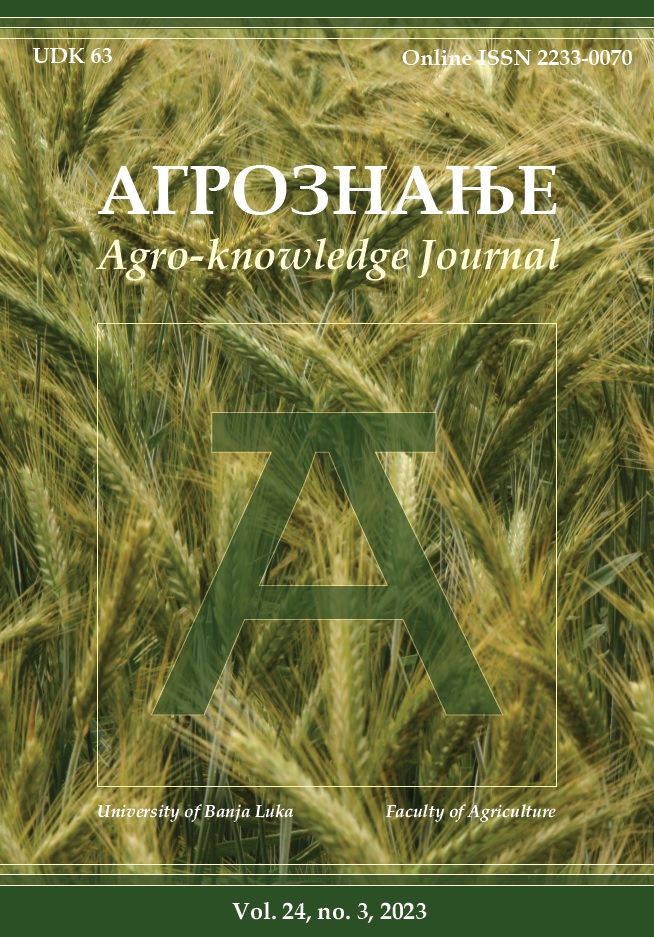Effect of foliar calcium and nitrogen treatments on yield and fruit quality of table grapes cv. ‘Cardinal‘
DOI:
https://doi.org/10.7251/AGREN2303091PAbstract
The foliar fertilization has been used as an important agrotechnical measure to avoid deficiencies and to improve quality. During the three consecutive years, a study has been performed on Vitis vinifera L. (cv. ‘Cardinal’) to examine whether a yield and grape berry quality have been affected by the foliar application of Ca and N fertilizers. A liquid mineral fertilizer containing 40% Ca(NO₃)₂ as Variant I and 31% N with 0,015 % Fe-chelate; 0,01 % Mg – chelat as Variant II (in text) has been sprayed four times during the growing period (before and after blooming, buckshot berries, and verasion). Results showed that foliar application of calcium and nitrogen increased the yield of table grapes in all three years of research, in comparison with a control variant. The highest yields of grapes in all three years of investigations were achieved in Variant II – 4.57 kg/vine (14.85 t/ha). During the tree years of investigations, the largest mass of grape bunch and berries were recorded in Variant II (382g and 368.68g), while the lowest cluster weight was in the control variant (344g and 330.92g). With a reference to the mechanical properties of the grape berries, the highest resistance to pressure (2229.70g) and breaking resistance (364.52g) were found in Variant I, treated with Ca fertilizer. The foliar application significantly affects the mechanical properties (resistance of the berry to pressure and breaking), especially in Variant I. The application of different types of foliar fertilizers did not have any significant effect on sugar contents and total acids, compared with the control variant.

